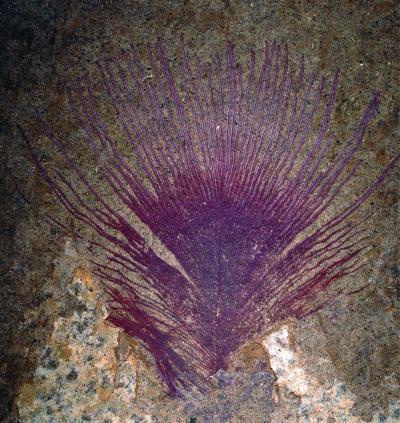Birds have evolved a lot of physicochemical mechanisms over millions of years to get brightly colored fur these days. The group of archaeologists and ornithologists headed by Yale University has now found evidence of iridescent colors in fossil fossils more than 40 million years old.
The new discovery in Biology Letters online on August 26 provides the first evidence that the nanostructures produce iridescent colors in fossil feathers.
Brilliance is the ability to change colors depending on the angle of observation, just like when you observe rainbow colors on a slick. The simplest iridescent colors are produced by the light radiating on the feather surface and the smooth surface of the melanin particles inside the feather protein. Examining feather fossils from the Messel Shale region, Germany with electron microscopy, the scientists also recorded the layers of melanin structure called melanosome.
'The feathers have a black background with metallic green, or bluish, or bronze in certain angles - very similar to the colors we see in starlings today,' Richard Prum , head of the Department of Ecology & Evolutionary Biology at Yale University, a member of the research authors group.
 Scientists have discovered that the nanostructures found in fossils 40 million years old are the agents that create iridescent colors on bird feathers. (Photo: Jakob Vinther / Yale University)
Scientists have discovered that the nanostructures found in fossils 40 million years old are the agents that create iridescent colors on bird feathers. (Photo: Jakob Vinther / Yale University)
Over the past 25 years, paleontologists have found tubular microscopic structures on fossil feathers and fuzz. Previously they were considered to be the bacteria that digest hair while the fossils were fossilized. But the team found that these structures are actually not bacteria but melanosomes, from which they demonstrate the original color patterns they produce. Currently, in the next step of the research process, scientists are continuing to explore whether there are other staining properties on these fossil feathers.
Derek Briggs, a lecturer in Yale University's Department of Geology and Geophysics, said: 'The discovery of details beyond the structure of feather fossils opens new perspectives for examine other details in soft body fossils, such as cilia and endocrine organs. '
The discovery could pave the way for identifying the color characteristics of other ancient birds and even dinosaurs, the authors said.
'Of course, what we really want is to reproduce the colors of winged dinosaurs,' said leader Jakob Vinther. 'We are working hard to achieve this.'
Other members of the research authors group include Julia Clarke (University of Texas at Austin) and Gerald Mayr (Senckenberg Research Institute, Federal Republic of Germany).
Research funding is funded by the National Science Foundation, National Geographic Association and Yale University.
 Discovered an ancient centipede fossil 99 million years old
Discovered an ancient centipede fossil 99 million years old Discovered bat-like dinosaurs in China
Discovered bat-like dinosaurs in China Discovered a 200-year-old bronze cannon of the coast
Discovered a 200-year-old bronze cannon of the coast Discover 305 million-year-old spider fossils
Discover 305 million-year-old spider fossils